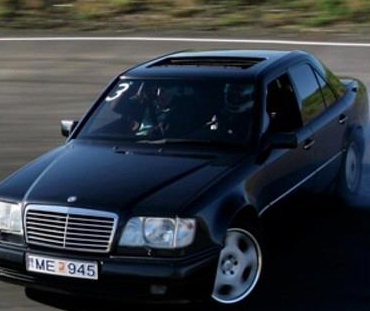Sometimes the obvious is not so obvious. Even after I wrote my previous blog post entitled, “Expert Witness: Which One are You?” (posted October 18th 2014) and received many favourable comments about how helpful it was, I honestly didn’t think to follow it up with another similar post. However, recently I read a good article (Neal 2009) about tips for courtroom testimony and I knew the timing was right for a follow up blog. It took me many years to learn the obvious things to avoid as an expert witness, so it is in the spirit of passing along some tried and true advice that I write this blog. I think you’ll find the techniques recommended here to be useful for expert witnesses as well as for other witnesses involved in criminal trials. Let’s get started!
When answering questions, the witness should:
-
Always tell the truth.
-
Listen carefully and then pause and take a breath before answering
-
Only answer the question that is asked.
-
Avoid slang and jargon
-
Not memorize answers to anticipated questions.
-
Speak loudly and clearly.
-
Avoid arguing with opposing counsel about the line of questioning.
-
Understand that it is OK to ask for a question to be repeated or rephrased.
-
Understand that it is necessary to say “no”, or “I don’t know”, rather than guessing on the witness stand.
-
Avoid qualifiers (e.g. “I think”, or “I guess”) and hesitation words (e.g. “uh” or “um”).
Regarding non-verbal behavior, the witness should:
-
Maintain good posture
-
Remember to look at the jury (but not stare) when testifying.
-
Not look to the attorney for answers.
-
Use a moderate and natural number of mannerisms and gestures.
Ok, so those are the more obvious suggestions for excellent courtroom performance. As you might expect, the not-so-obvious are always way more interesting. With that in mind, I am compelled to share with you the LUCAS Approach. No one could deliver a teaching moment like my dear friend Doug Lucas, now retired Director of the Centre of Forensic Sciences. Here are Doug’s tips for courtroom testimony:
LUCAS APPROACH
L isten to the Question
U nderstand the Question
C onsider Your Answer
A nswer
S hut Up!
Now I could end this blog here because, honestly, how much more do you need to know about tips for courtroom testimony?! But, as you might expect, with a career of testifying about forensic toxicology also under my belt, I have some thoughts on how to be more effective on the witness stand:
WIGMORE’s RULE
“If the answer you’re considering gives you a LOT of pleasure, invariably it is the wrong answer.”
Let me explain. If in replying to the opposing lawyer you are thinking, “This is a great answer, it will really blow him/her away and show him a thing or two”, you can almost guarantee that the answer will be a mistake.
And talk about a transferable skill! This rule also applies in personal relationships. Sadly, I have to admit, it was a lesson a bit hard learned for me. But, here’s how this plays out. If you and your spouse are having a “discussion” and you think of a smart response to a question, invariably you will be sleeping on the couch!
Reference
Neal, T.M.S., “Expert Witness Preparation: What does the Literature Tell Us?”, The Jury Expert, 21: 44-52, 2009
Acknowledgments
I would like to acknowledge Michael J. Kennedy Esq., who included this paper in the CDLA seminar, “Blood is Thicker than Breath”, at the Orange County Airport Hilton, Irvine on October 11th 2014.
36th Annual Conference of the Southwestern Association of Forensic, South Padre Island, Texas, October 19th- 23rd 2014
I had an enjoyable time at the SWAFS conference, at which I presented an intensive 3-day Alcohol Workshop – “Aspects of Forensic Alcohol Toxicology – Not Just Drinking and Driving”. Gratefully, many of you still find me interesting and the workshop was well attended making for lots of thoughtful and insightful input. It was divided into 4 parts and the topics covered included:
Part 1
Absorption, distribution and elimination of alcohol, effects of trauma, IV infusions, pharmacokinetics of drinking drivers, retrograde extrapolations, Widmark calculations, blood alcohol analysis- headspace GC and enzymatic, effects of swabs, preservation of blood samples, salting-out effect, urine alcohol and biomarkers.
Part 2
Breath alcohol principles, methods of breath alcohol analysis, blood:breath alcohol ratios, effect of body temperature, mouth alcohol effect, specificity, breath alcohol containers, postmortem BAC, urine, vitreous humor, hematomas, putrefaction, postmortem diffusion, fatal BACs.
Part 3
Effect of alcohol on driving ability (laboratory, driving simulator, closed course, highway driving and epidemiological studies) , SFSTs, physical signs, chronic tolerance acute tolerance (Mellanby effect), historical aspects of drinking and driving, the Grand Rapids study and the 1967 film- Point Zero Eight.
Part 4
Blackouts, aggression, involvement of alcohol in falls, personal injury cases, sexual assaults, DFSAs, fires, hypothermia-paradoxical undressing and terminal burrowing, maritime shipping, boating and drowning, suicides and courtroom tips.
Yes, it was a full 3 days!
I’m guessing that most of you who read this blog are also following me on LinkedIn since I now have over 5,000 first connections. With that said, if you haven’t made your way to LinkedIn, I whole-heartedly encourage you to do so and, please, look me up!




